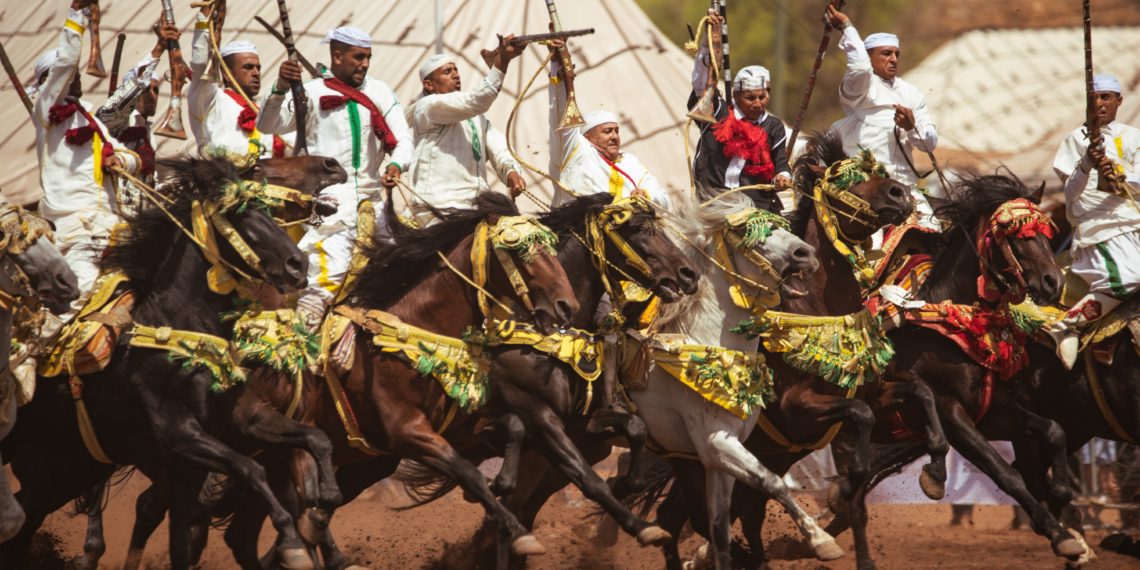Tbourida is a traditional Moroccan horsemanship display that is often performed at festivals and celebrations throughout the country. It involves a group of horsemen, known as “tbouridat,” who perform intricate maneuvers and stunts on horseback to the rhythm of traditional Moroccan music.
The tbourida can trace its roots back to the Moroccan cavalry, which was used for military purposes as well as for ceremonial purposes. The horsemanship skills displayed in the tbourida were developed over centuries and have been passed down through the generations.
One of the most impressive aspects of the tbourida is the elaborate costume worn by the tbouridat. The outfits typically include a long, flowing robe, a turban, and a pair of pointed slippers. The horses are also decked out in traditional Moroccan attire, with ornate saddles and bridles.
The tbourida is typically performed in a large open area, with the tbouridat forming a circle and performing a series of intricate maneuvers and stunts. Some of the most common stunts include standing on the horse’s back, leaping from one horse to another, and riding the horse while standing on its head.
The tbourida is not only a display of horsemanship skills, but it is also a form of cultural expression. It is an important part of Moroccan culture and is often used to celebrate special occasions such as weddings and religious festivals.
In addition to the tbourida, there are also other traditional Moroccan horsemanship displays, such as the fantasia, which involves the tbouridat firing guns and throwing spears while riding their horses at a full gallop.
Despite its popularity, the tbourida is not without controversy. Some critics argue that the stunts performed during the tbourida are dangerous and that the horses are mistreated. However, supporters of the tbourida argue that the horses are well-trained and treated with care, and that the tbourida is an important part of Moroccan culture that should be preserved.
Overall, the tbourida is a vibrant and exciting display of traditional Moroccan horsemanship that has been enjoyed by generations of Moroccans. It is an important part of the country’s cultural identity and continues to be a popular and beloved tradition.





